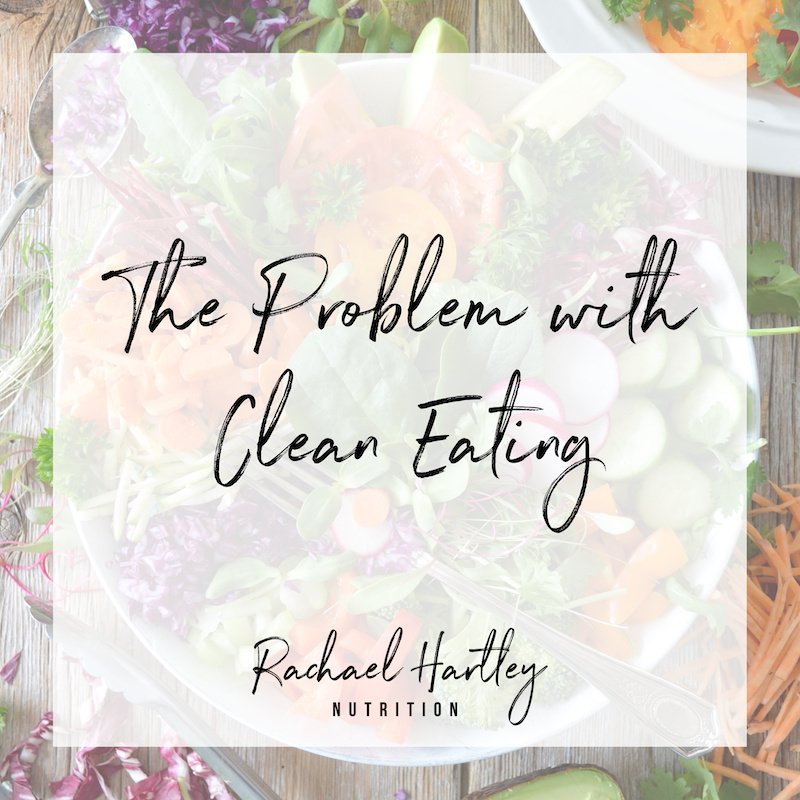Why You Should Stop Labelling Food Good and Bad
In mainstream discourse about food and nutrition, food is often put into binary categories of good and bad, healthy and unhealthy. This blog discusses why you should stop labelling food good and bad and the harms of binary thinking around food.
For many people who are first learning about intuitive eating, one of the stuck points is understanding how there can be no good or bad foods. It goes against everything they’ve been told about nutrition. They’ve heard so many scary messages about added sugars and carbs and processed foods and dairy, they believe surely there must be foods that are just flat out bad for you, right?
Categorizing food as good and bad is incredibly normalized in how we talk about food in our culture. Foods are labelled as healthy and clean. There’s Halo Top ice cream, guilt free mac and cheese from Trader Joe’s and Perfect Bars. Conversely, other foods get labelled as junk food, unhealthy or are just referred to as “crap.” It’s hard to have a discussion about nutrition where food isn’t being put into a hierarchy.
As normal as it is to label food as good or bad, putting food into these hierarchies is not only scientifically and nutritionally incorrect, it’s also harmful to our relationship with food too. Here’s why:
Why We should Stop Labeling Food Good and Bad
It confuses nutrition and health.
When I work with clients helping them look at food in a more neutral way, one of the things we discuss is how nutrition is different from health. When food gets labelled as good and bad or healthy and unhealthy, it’s based on the idea that “bad” foods have low or no nutrition and “good” foods are high in nutrients. While it is true that some foods contain very low amounts of vitamins, minerals, fiber and antioxidants, and that other foods are more nutrient-dense, that doesn’t mean these foods are healthy or unhealthy.
Health is much more complex than nutrition. It encompasses social, psychological and financial factors. For example, if someone was trying to eat only the most nutritious foods, but it meant that they were socially isolated, had to spend all of their time and money on food, and were stressing out about eating the “right” foods all the time, that wouldn’t be a very healthy way of eating. In this example, it might be healthier to choose food with less nutrients, but are more satisfying, budget-friendly, and allow flexibility when socializing.
As I remind my clients, the healthy choice isn’t always the most nutritious choice. Making healthy choices with food means considering other factors outside of nutrition, like mental/emotional, financial, and/or social needs.
Some “bad” foods are helpful in certain situations.
Different foods serve different purposes, and that includes foods that are often thought of as “bad.” For example, a runner might decide to use a gel packet during a race. These gel packets are simply sugar. They are not exactly nutritious, and yet they’re a really healthy choice for someone who needs a quick source of easily available energy to fuel a workout. Similarly, when someone is experiencing a low blood sugar, the rapidly available glucose in a soda or candy is a healthy choice for that situation.
Another example: for anyone reading this who has had a bad stomach bug or struggled with morning sickness during pregnancy, what were the foods that were most easily tolerated? Simple, starchy carbs – think ramen noodles, white toast, and saltines. While not necessarily nutrient-dense (although most of these are fortified so you are getting a nice dose of B vitamins and iron), these foods are perfect for giving your body the energy it needs for fighting off illness or nourishing a growing fetus when you’re not able to hold many things down.
Labeling Foods Good and Bad Ignores Individual Nutrition Needs
Mainstream nutrition discourse makes it seem like there is one “right” way to eat. One thing I stress with gentle nutrition is that nutrition needs are different from person to person based on many factors including (but not limited to) health history, genetics, and nutrition status. For example, almonds are a quintessential health food (hello “almond moms!”). They are packed with vitamin E, heart healthy monounsaturated fats, fiber, and phytonutrients. Almonds are a healthy food for most people to eat – but definitely not for someone who has a tree nut allergy!
OK, so that example might be a little too obvious for you, so let’s look at a less clear example. For many people with IBS, high fiber foods, especially raw fruits and vegetables, can trigger IBS symptoms. One might think of a snack with raw crudites and hummus as a healthy snack, and while it’s certainly nutritious, it’s not a healthy choice for someone if it causes intense abdominal pain and cramping. For more on this, read this blog post on IBS from my associate RD Kate, who shares her personal experience learning how foods that were labelled “unhealthy” were often the easiest ones on her stomach.
Less nutritious doesn’t mean harmful.
There are certainly examples of foods that can cause harm when consumed. There’s some pretty horrifying stories about adulterated foods in the past (if you’re not currently eating, this podcast episode on the swill milk scandal of the 1850s is pretty fascinating and also absolutely disgusting). While today we have a much more tightly regulated and relatively safe food supply, there are still outbreaks of food-borne illnesses, sometimes because of shotty business and food safety practices, and sometimes because of plain ‘ole bad luck. There are also examples of foods that can cause harm for certain people when consumed in excess, like foods containing trans-fats. But the vast, vast majority of foods that get labeled “bad” aren’t actually harmful, they are simply less nutritious.
Labelling a food as “bad” sends the message that a food is categorically harmful to consume. While moderation with certain foods (a loaded term for sure, especially in non-diet spaces) might be useful in some circumstances, that doesn’t mean including it as part of an overall nutritious eating pattern is harmful or that a food is bad for everyone. Yes, even for sweets. Yes, even for soda. And yes, even for processed foods.
This might sound like semantics, but I think it’s actually pretty important. When a food is categorically labelled as “bad,” it sends the message that a food should be avoided completely. If avoidance is the goal, that doesn’t leave any space for talking about a food with nuance, or for figuring out how to engage with a food in a physically and mentally healthy way.
What if I Really and Truly Believe That a Food is Bad.
So, I don’t have the time, energy, or frankly the will, to write a blog post debunking, reframing and adding context and nuance to every nutrition belief out there. I’m guessing many of you reading this are thinking of at least one food that you are absolutely positive is flat out bad.
Let’s go with it and say you’re right. The food you’re thinking of is categorically, certifiably, trademarked BAD. Does labelling it as such actually help you engage with it in a healthy way? My guess is if it’s a food you like or are exposed to regularly, probably not. More likely, you’re still eating that food but in a chaotic, restrict-binge kind of way. And if you are one of the few that’s “successfully” avoiding the food, it’s likely creating quite a bit of stress and fear.
Remember, good nutrition is about the big picture of what you’re consuming over time, not micromanaging every meal and snack. You don’t need to consume a multivitamins worth of nutrition every time you eat. There’s space to include foods solely for pleasure, enjoyment, social connection and convenience.





